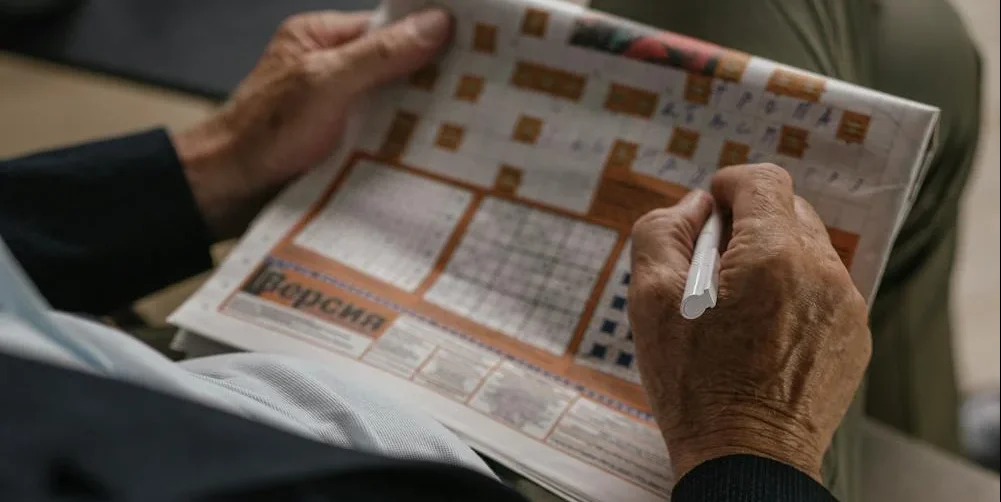What makes The New York Times games so addictive?
The gold and emerald squares of the once-inescapable Wordle puzzle no longer swamp our social media feeds quite as they did in January 2022, when The New York Times (NYT) acquired the game for a seven-figure sum and sealed its place in millions’ daily routines.
Maybe the crushing humiliation of a five-guess struggle on a word everyone solved in three became an indignity too great to bear. Or perhaps a toe-curling confession to the family group chat that you had – in fact – shattered your hundred-day streak in a drunken haze was the final straw for your commitment to The New York Times games.
Alas, it’s safe to say that Wordle made its mark. According to UKOM data, February 2022 saw over two million daily UK visitors to the site – that’s almost 5% of the population.
Tracing the origins of The New York Times games, however, reveals an initially reluctant foray into puzzles, rather than the trendsetting force of many a WhatsApp group’s morning entertainment. The New York Times once dismissed crosswords as a “primitive form of mental exercise”.
Crosswords had been appearing in American newspaper for almost 30 years when the paper finally swallowed its pride and joined the game in 1942 – and eventually mastered it. This late start in puzzle culture hadn’t stopped the paper from eventually launching an array of games, establishing The Mini, Spelling Bee, and Letter Boxed before acquiring Wordle in 2022.
But Wordle joining the ranks of the American paper’s games marked a new era of growth, captivating the attention of millions of newly-invested players with an enticing selection of alternative brain-teasing formats.
Wordle joining the ranks of the American paper’s games marked a new era of growth
“Just one more!” you cry, emerging triumphantly from another facile completion of the Mini Crossword – no Americanism is too alien for you. And several more you are met with: Connections beckons, Strands calls, and before you know it, you’re diving head-first into the publication’s gauntlet.
Rebranding its NYT Crosswords app to NYT Games in March 2023, the publication made no secret of its intention to build on the success of Wordle. Three months later, Connections would be introduced to the digital playground and quickly become a standout addition to the app’s lineup.
The premise is deceptively simple: players must sort 16 words into four related groups. But beneath this apparent simplicity lies a game that thrives on ambiguity, lateral thinking and some fiendish double meanings that often tap into pop culture and current affairs.
Next came Strands, a word search-esque game with a unique twist. Players must identify a hidden theme and uncover related words woven through a grid of letters, with one ‘spangram’ – a word spanning the board that serves as a crucial hint.
These continuous expansions have proved lucrative for The New York Times: over 11 billion puzzles were solved last year as users stayed to solve puzzle after puzzle in just one app.
But arguably NYT’s real triumph has been in mastering the shareability that has driven the popularity of their Games app. Upon solving a puzzle, each congratulatory message is accompanied by an opportunity to send a vibrant collection of squares telling recipients of a player’s success without clueing them in on the day’s challenge. This clever system not only fosters a (healthy) degree of competition but also invites others to join the daily ritual. What’s more, with themes aligned to America’s hottest topics, from The Eras Tour to the Super Bowl, the games stand as a cultural touchpoint.
But beyond their social appeal, The New York Times’ puzzles are meticulously designed to keep players coming back. The science of the streak is a powerful tool; players return not just for the satisfaction of solving (and bragging about it) but to maintain the unbroken chain of victories that becomes a badge of honour.
A particularly tricky puzzle can even be devastating: one Wordle last year caused 5.6 million users to lose their streaks. Just as the eternally looming Duolingo bird commands us to practice Spanish, we quickly integrate the ritual of cracking Connections or tackling The Mini into our daily routines – if only to avoid upsetting our future selves.
Even the notoriously utilitarian LinkedIn, the bane of every student’s existence and the last place one might seek entertainment, has surrendered to the puzzle craze, rolling out its own daily brain teasers in May 2024.
It seems that no matter how much we resist, The New York Times games have us all in an inevitable grid of puzzle obsession.

Comments